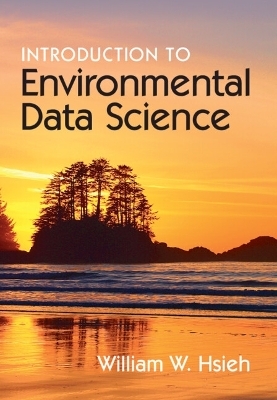
Introduction to Environmental Data Science
Cambridge University Press (Verlag)
978-1-107-06555-0 (ISBN)
Statistical and machine learning methods have many applications in the environmental sciences, including prediction and data analysis in meteorology, hydrology and oceanography; pattern recognition for satellite images from remote sensing; management of agriculture and forests; assessment of climate change; and much more. With rapid advances in machine learning in the last decade, this book provides an urgently needed, comprehensive guide to machine learning and statistics for students and researchers interested in environmental data science. It includes intuitive explanations covering the relevant background mathematics, with examples drawn from the environmental sciences. A broad range of topics is covered, including correlation, regression, classification, clustering, neural networks, random forests, boosting, kernel methods, evolutionary algorithms and deep learning, as well as the recent merging of machine learning and physics. End‑of‑chapter exercises allow readers to develop their problem-solving skills, and online datasets allow readers to practise analysis of real data.
William W. Hsieh is a professor emeritus in the Department of Earth, Ocean and Atmospheric Sciences at the University of British Columbia. Known as a pioneer in introducing machine learning to environmental science, he has written over 100 peer-reviewed journal papers on climate variability, machine learning, atmospheric science, oceanography, hydrology, and agricultural science. He is the author of the book Machine Learning Methods in the Environmental Sciences ( Cambridge University Press, 2009), the first single-authored textbook on machine learning for environmental scientists. Currently retired in Victoria, British Columbia, he enjoys growing organic vegetables.
1. Introduction; 2. Basics; 3. Probability distributions; 4. Statistical inference; 5. Linear regression; 6. Neural networks; 7. Nonlinear optimization; 8. Learning and generalization; 9. Principal components and canonical correlation; 10. Unsupervised learning; 11. Time series; 12. Classification; 13. Kernel methods; 14. Decision trees, random forests and boosting; 15. Deep learning; 16. Forecast verification and post-processing; 17. Merging of machine learning and physics; Appendices; References; Index.
| Erscheinungsdatum | 23.03.2023 |
|---|---|
| Verlagsort | Cambridge |
| Sprache | englisch |
| Maße | 175 x 250 mm |
| Gewicht | 1330 g |
| Themenwelt | Informatik ► Datenbanken ► Data Warehouse / Data Mining |
| Informatik ► Theorie / Studium ► Künstliche Intelligenz / Robotik | |
| Naturwissenschaften ► Biologie ► Ökologie / Naturschutz | |
| Technik ► Umwelttechnik / Biotechnologie | |
| ISBN-10 | 1-107-06555-0 / 1107065550 |
| ISBN-13 | 978-1-107-06555-0 / 9781107065550 |
| Zustand | Neuware |
| Informationen gemäß Produktsicherheitsverordnung (GPSR) | |
| Haben Sie eine Frage zum Produkt? |
aus dem Bereich


